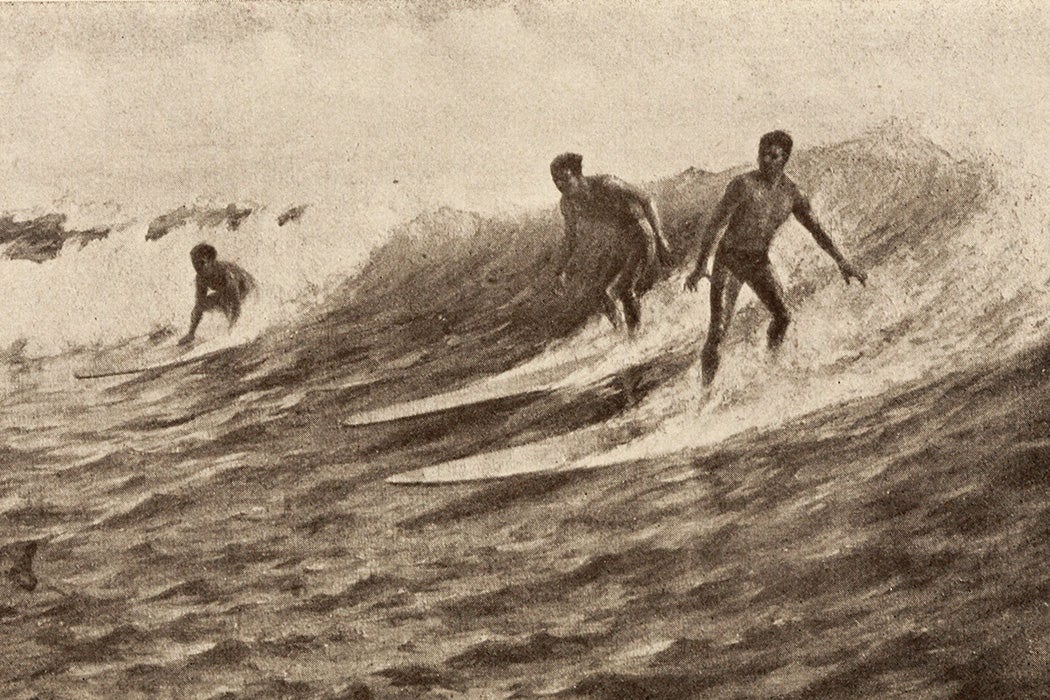This summer, people all over the world are grabbing surfboards and riding waves. Patrick Moser, a professor of French who has written extensively about surfing, writes that this is a testimony to Hawai‘ians who kept surfing alive through the nineteenth century. They did this in defiance of white missionaries who saw it as a profane, unproductive, and dangerously co-ed activity.
Moser found numerous attacks on surfing in missionary-run, Hawai‘ian-language newspapers in the first half of the century. One 1838 story described the sport as “the root of lasciviousness.” A few years later, another missionary writer complained that when the surf was good at one beach, “many people flock here to surf. They stay until the time for gardening has passed.”
Moser writes that previous histories of surfing asserted that it nearly stopped in the nineteenth century and was only revived in the twentieth, thanks to white people taking an interest in the sport. That follows the account given by the missionary Hiram Bingham in 1847. He said that “heathen sports” like surfing had “nearly disappeared,” thanks to missionaries’ efforts.
Decades later, another white Hawai‘ian, Nathaniel B. Emerson, told a similar story. In an 1892 address, he asserted that “to-day it is hard to find a surf-board outside of our museum as private collections.” Emerson credited the sport’s decline to the “new morality,” which frowned on the “fact that both sexes engaged in it.”
But an 1856 account by British travel writer Samuel S. Hill suggested something quite different was happening. Hiking near a small village on Big Island, Hill reported, he met several women who told him that “all the men, women, and children of the place, save themselves, were sporting with their surf-boards in the water.”
Hill described surfing as “truly a famous and animating diversion, but, for what reason I know not, now discouraged by the missionaries, and no longer played with the same spirit among the islanders whenever the Europeans are mingled among them.”
Moser suggests that men like Bingham and Emerson saw only a small part of what was going on. In Honolulu and some other parts of the islands, missionaries greatly influenced people’s behavior. But, in places where few white people were “mingled among” Hawai‘ians, surfing seems to have continued.
Weekly Newsletter
Moser found plenty of reports from the 1860s and 1870s of Hawai‘ian royalty—some of whom had rocky relationships with the Christian missionaries—enjoying the waves at Waikīkī. King David Kalākaua, who reigned from 1874 to 1891, staged surfing displays for visitors to the islands as part of his efforts to revive traditional culture.
By the end of the century, Hawai‘ian surfers were sharing their culture with other parts of the world. An 1893 story in the Hawai‘ian Star reported that James Apu of Kaua‘i Island was giving surf-riding exhibitions in San Francisco. Moser argues that it was surfers like Apu, more than white Americans who are often credited with “reviving” the sport, who put surfing on the road to its current global reach.







